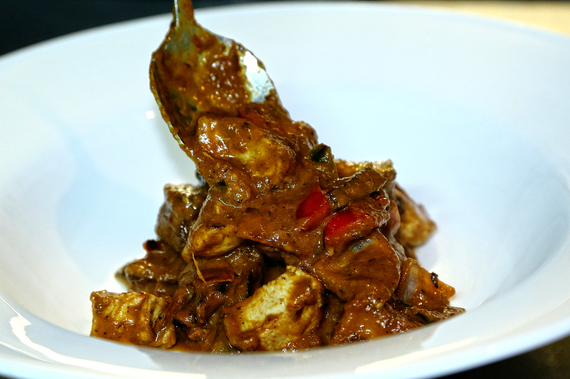The approximately 3.5 million individuals of Indian origin who live in the United States collectively have the highest per capita income of any single ethnic group and also comprise more than three times the overall national percentage in terms of achievement of higher education (bachelor's degree or higher). In a nutshell, US inhabitants of Indian origin are the richest and most educated immigrant group. As a professional chef and mathematician who believes and teaches the supply-demand model, I can't help but lament about the state of Indian cuisine in the United States. Relative to the stereotypes which are continually perpetuated, by my estimates, only a smattering of efforts nationwide have successfully elevated Indian cuisine to its rightful stature as a complex, technically sound, old-world, and frankly, world-class genre.
Let's consider some of the issues.
1. I do/don't like curry: Personally, I am would like to see a banishment of "curry powder" from grocery store shelves. That ingredient has single-handedly stereotyped the flavor of dishes purported to be from the Indian subcontinent. I recently made a complex, spiced gravy for a guest from Guyana who pointed out that he missed the "curry flavor". For me, it was a win.
2. I don't like spicy food: There is spicy food and there is pungent food. Spices in my book (literally) are plant based and can be any part of a plant, except the leaf (herb). To say that one doesn't like spicy food would mean that one couldn't enjoy apple pie with its hints of cinnamon, clove, and whatever else. Now that's just un-American. Not all Indian food uses spices and certainly not all Indian food is pungent (as in "hot"). If you've ever had an "anapkai kura" (bottle gourd relish) with pesarattu (vegan green gram crepe) from Andhra Pradesh, a region known for its pungent and bold flavors, it will be apparent that for every stereotype, one can find a shattering counter-example.
3. That seems expensive for ethnic food: Really? Consider a Hyderabadi biryani chock full of grass-fed local mutton, dried fruits and nuts, expensive spices like saffron and cardamom, perhaps a few seasonal & local vegetables at their peak, and a reserve brand of imported Basmati rice. A paella Valenciana can get away with a $28 price tag on a menu, but charging anything more than $19 for such a biryani would raise eyebrows. The ingredients can be of the highest quality, the expertise required is at least as much as what is needed to expertly execute a paella, and the result in my book, is at least as powerful. Comparing the price on the streets of Hyderabad to a special I might create at my restaurant in DeLand is both invalid and unfair.
In a nutshell, the more we expect ethnic food to be inexpensive, the more frequently it is executed in a formulaic and tempered way using sub-standard ingredients. This is a case of driving down the quality of supply to meet an obvious demand. There is certainly a time and place for a less than refined or inspired execution, but just because it isn't French or Japanese cuisine, to name two examples that have been successfully marketed to be deserving of upscale prices, it doesn't mean that the other cuisines of the world are lesser in stature when it comes to technique or intrinsic quality.
The Indian diaspora in this country bear a certain responsibility to spread the deserving demand. After all, the facts point towards a group who can certainly afford it and are educated enough to understand that the stereotypes will remain as long as we perpetuate them ourselves.
